The Mirage III replacementThe RAAF began the initial stages of scoping a replacement for its Dassault Mirage III fighters in 1968. The service issued an Air Staff Requirement for new fighter aircraft in December 1971, which received a larger than expected number of proposals from manufacturers. At this time the RAAF expected to start phasing out the Mirage IIIs in 1980. In 1973, a team of RAAF personnel inspected the McDonnell Douglas F-15 Eagle, Northrop YF-17, Saab 37 Viggen and Dassault Mirage F1 programs, but recommended that any decisions about a suitable replacement be delayed so that several new fighters that were expected to soon become available could also be considered. In August 1974 the Australian Government decided to defer the fighter replacement project and extend the Mirage IIIs' operational life into the 1980s. One of the four Mirage III-equipped squadrons was also disbanded at this time.
Work on the Mirage replacement program resumed in 1975, and the Tactical Fighter Project Office was established in 1976 to manage the process of selecting the RAAF's next fighter. A request for proposals was issued in November that year and attracted eleven responses. By March 1977 the office had chosen to focus on the F-15 Eagle, General Dynamics F-16 Fighting Falcon, Dassault Mirage 2000 and Panavia Tornado, as well as the McDonnell Douglas F-18A and F-18L; the F-18A was a carrier-based fighter developed from the YF-17 for the United States Navy, and the F-18L was a land-based variant of this design. The Grumman F-14 Tomcat was also considered by the project office, but was regarded as unsuitable and never placed on the official shortlist. In November 1978 the F-15 and Tornado were removed from the list of aircraft being considered. The Tornado was excluded as it was principally a strike aircraft and had limited air-to-air capability. While the F-15 was an impressive aircraft that met or exceeded almost all of the RAAF's requirements, it was believed that the air force did not need a fighter with such advanced capabilities and that introducing it into service could destabilise Australia's region.
Further evaluation of the remaining aircraft took place during 1979. Wing Commander (and later Air Vice-Marshal) Bob Richardson test-flew a Mirage 2000 in April 1979, and reported that while the aircraft had excellent aerodynamic characteristics, its avionics, radar, fuel system, cockpit and weapons capability were inferior to those of US designs. Dassault promised however that as he was flying only a development aircraft, these issues would be addressed in the near future. It was pointed out that the adoption of the Mirage offered considerable benefits in continuity of supply for the RAAF.
Richardson also test-flew a YF-17 that was being used as a demonstrator for the F-18L in mid-1979, and was impressed by its capabilities. No F-18Ls had been ordered at this time, however, and the RAAF did not want to take on the risk of being the lead customer for the design. At about the same time, the RAAF rejected an offer of F-14 Tomcats that had been originally ordered by the Iranian Government but not delivered as a result of the revolution in that country. While the Tomcats were made available at a greatly reduced price, the air force judged that these aircraft were too large and complex for its requirements.
With the F-14, F-15, Tornado and the F-18L rejected, the RAAF was faced with a choice between the Mirage 2000, F-16 and F-18A. Richardson and several other RAAF pilots tested United States Air Force (USAF) F-16Bs in 1979 and 1980, and reported that the aircraft had excellent performance but could be difficult to control at times. The evaluation team was also concerned about the reliability of the F-16's engine and regarded the aircraft as technologically immature. It was also noted that the aircraft's radar was inferior to that of the F-18A, and that F-16s could not fire the beyond-visual-range (BVR) air-to-air missiles and long-range anti-shipping missiles that the F-18A was capable of operating. In contrast, the evaluation team was impressed by the F-18A, and regarded it as being a more robust and survivable aircraft as it had been designed to operate from aircraft carriers; these features were important for operations from bare bases in northern Australia. Richardson and three other RAAF pilots test-flew F-18As, and reported that the aircraft handled well, but had some deficiencies with its flight control system and engines; these were not seen as major flaws by the evaluation team, however. The F-18A's twin engines were considered to be its main advantage over the single-engined F-16 and Mirage 2000, as research conducted by the evaluation team found that the attrition rate for single-engined fighters was twice that for aircraft with two engines. Overall, however, the RAAF judged that the Mirage 2000, F-16 and F-18A were too immature for a decision to be made in 1980 as had been originally planned, and recommended to the Government that this be deferred by a year.
The Government accepted the RAAF's recommendation, and delayed its decision on a Mirage III replacement until late 1981. This gave General Dynamics an opportunity to offer the improved F-16C to the RAAF. The capability of these aircraft was closer to that of the F-18 as they were equipped with BVR missiles. Richardson and another RAAF pilot test-flew F-16Cs in May 1981. The F-18 design was also improved during 1981, and was redesignated the F/A-18. When RAAF test pilots flew these aircraft during 1981, they found that the deficiencies they had detected in 1980 were now addressed. Overall, the RAAF concluded that while both aircraft met its requirements and the F-16 was less expensive, the F/A-18 was the superior design as it was more technologically mature, easier to maintain during operational deployments, and likely to have a much lower attrition rate.
The Mirage 2000 was therefore considered a rank outsider. Dassault, anxious to clinch the deal, offered extraordinarily cheap rates. In addition, he also offered access to the Mirage 4000, a twin-engined, “heavy fighter” version of the Mirage 2000. He also promised that most of the deficiencies of the developmental Mirage 2000 which Richardson had flown in 1979 had been corrected. A return visit to Istres in France was arranged. Richardson and three other RAAF pilots all test flew a production Mirage 2000 and the prototype of the Mirage 4000. Impressed at the improvements to the Mirage 2000 and the price, he felt he was duty bound to recommend a mix of Mirage 2000s and 4000s to fulfil the RAAF requirements.
The Government accepted this advice, and announced on 20 October 1981 that 75 Mirage 2000s and 25 Mirage 4000s would be ordered. As part of this announcement, Minister for Defence Jim Killen acknowledged that the American fighters would have been more technologically advanced than the French designs but the Dassault offerings were at almost give away prices and could not be refused..
Instead of directly ordering the aircraft from Dassault, the Australian Government purchased its Mirages through the French Government's Foreign Military Sales (FMS) program. Ordering the aircraft via the French Government allowed the RAAF to take advantage of the superior purchasing power of the French military, and reduced the service's project management requirements. This led to a complicated arrangement whereby the aircraft were ordered by the French Government, delivered to the French Armee de l'air, and then transferred to the RAAF once initial flight testing had taken place. The process functioned smoothly, however, and was cost effective.

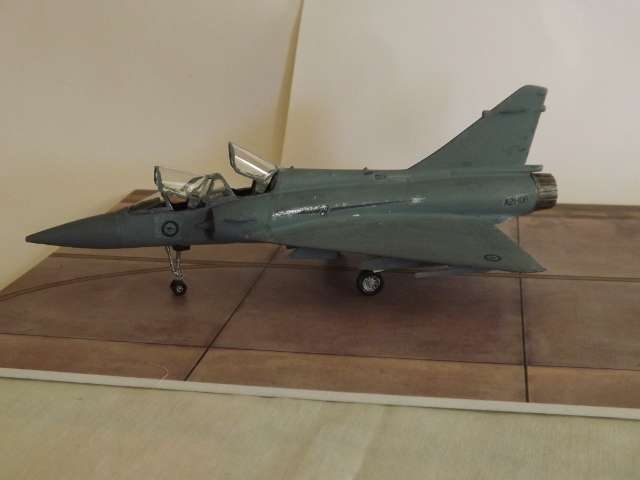


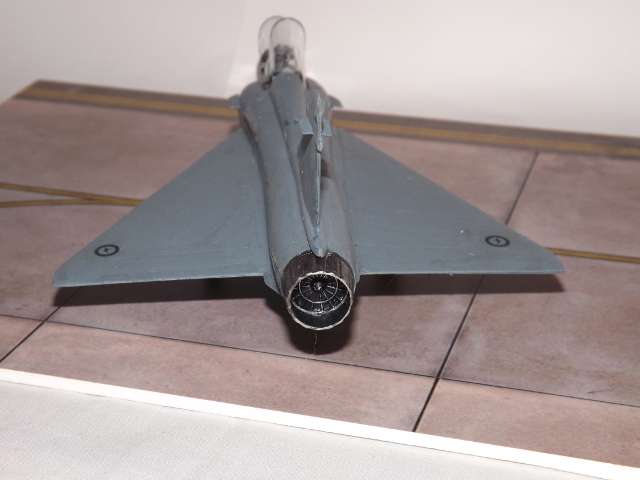
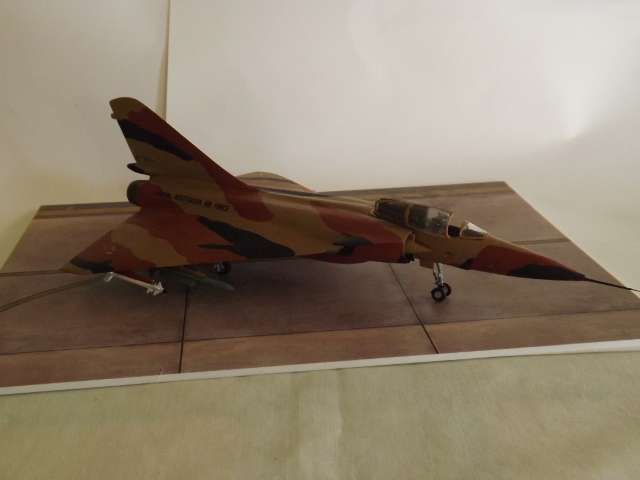

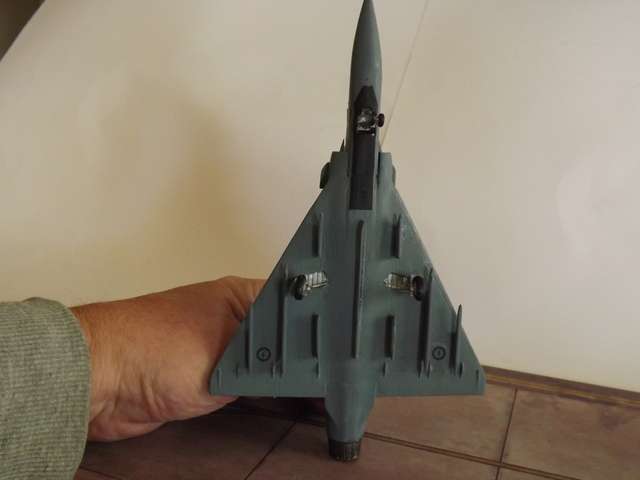
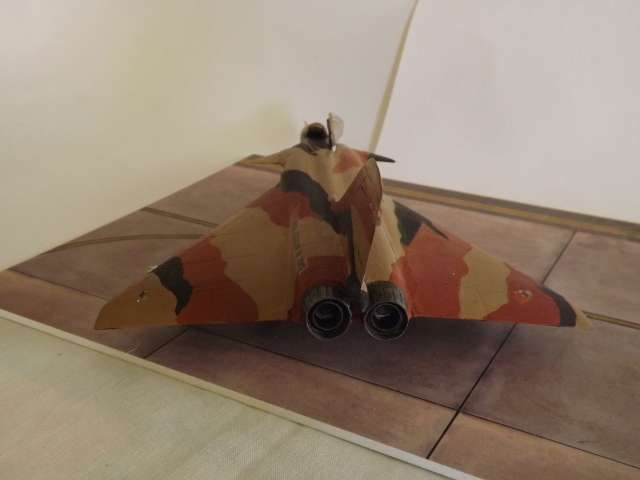

 The Models
The ModelsThe models are stock standard. The Mirage 2000 is an Italeri Mirage 2000D twin seater. It is painted as being a member of 77 Squadron at the time of it's introduction to service. The Mirage 4000 is a Mirage 4000A, a member of 75 Squadron at the time of it's deployment to Iraq in 1990 to take part in the First Gulf War. It has been repainted in the standard RAAF Arid Scheme, flown normally in the “Top End”, Northern Australia. It is by Anigrand. My first Anigrand kit and it was a pleasure to build and paint.